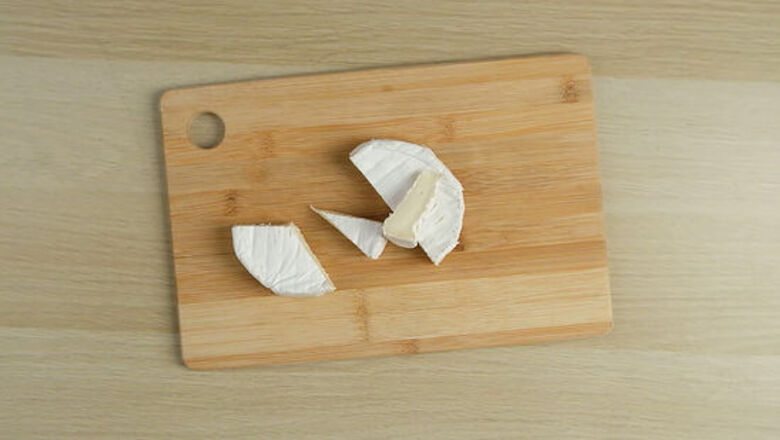
views
Handling a Wheel or Block of Brie
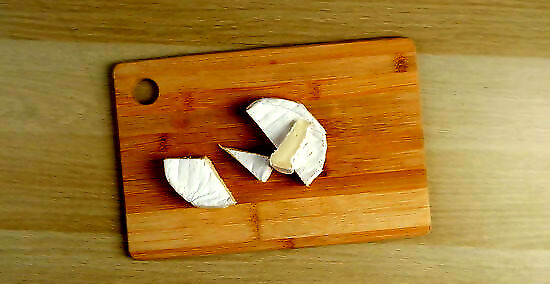
Cut brie by the slice from the tip to the rind. Cutting the tip off, or “pointing” the cheese, is considered to be a faux pas. The tastiest part of the brie is the tip. When you cut that part off for yourself, you’re basically telling everyone else, “all mine!” Keep the brie triangular-shaped, cutting along its edge. If the rind doesn’t appeal to you, cut the cheese at more of an angle to maximize the amount of “inside” you get. No one will notice as long as you preserve the triangular shape of the brie. Go on and take part of the rind! If you’re cutting brie the right way, each slice will have some on it. If you cut across the brie to remove the tip, you inevitably leave behind a slice that is all rind.
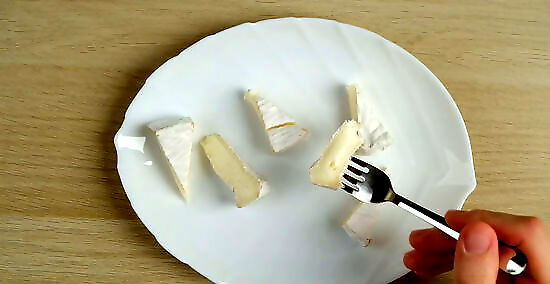
Eat the rind along with the rest of the cheese. Everyone wonders what they are supposed to do with that hard shell on cheese, but a brie rind is safe to eat. Don’t try scraping out the inside to avoid the rind. That would be like taking the meat out of a sandwich and throwing away the bread. Brie rind is crumbly and has a slightly bitter taste, but it isn’t too distracting from the cheese’s gooey goodness. If you haven’t tried the rind before, go for it! The rind isn’t for everyone. Keep in mind it tastes worse as the brie goes bad, so be sure to try it on a fresh slice.
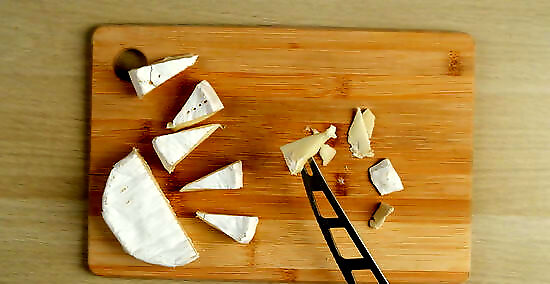
Peel the rind off a slice of cheese if you don’t want it. Some people don’t like the rind and that’s okay, but wait until you have the slice of cheese on your plate before removing it. Do your best to peel it off by hand. Brie is soft and sticky, so separating the rind isn’t the easiest thing in the world. Try cutting the top off to make the rest easier to remove or eat around it if you have to. When you’re serving brie at home, you can cut off the rind ahead of time. Freeze the cheese for about 30 minutes, then slice off the rind with a sharp knife. Don’t remove the rind if you’re serving the cheese to guests, since some of them may want it.
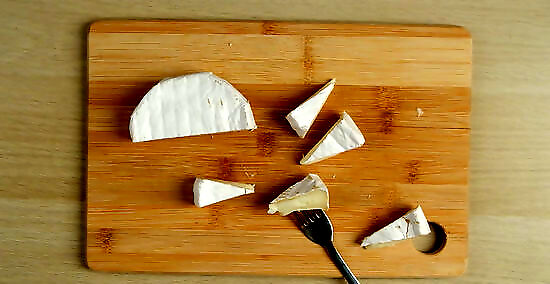
Throw away the cheese if it smells like ammonia. Brie generally keeps for a couple of weeks until it is opened, and after that, it lasts a week or less. The rind turns gray and flaky as the cheese spoils. Green and pink mold spots are things you don’t want anywhere near your mouth. The inside of the cheese turns gooey and has a nasty chemical smell as it goes bad. Underripe brie feels hard to the touch. It has a hard outer rind with a springy inside. Overripe brie turns soft and runny. Brie stops aging after you slice it, so eat is as soon as possible to avoid having it spoil on you. If you have to store it, wrap it up in parchment or wax paper and keep it in a refrigerator drawer away from moisture. Freezing generally isn’t recommended unless you’re going to use it in dishes where the texture doesn’t matter, such as in soups and casseroles. It will last up to 6 months in a freezer-safe container. Thaw it in the refrigerator, cold water, or the microwave until it softens.
Serving Brie
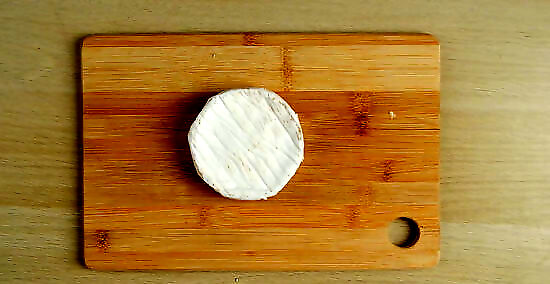
Leave the brie out at room temperature for 1 hour. Take it out of your refrigerator and let it settle. It turns nice and creamy so you get the most out of its flavor. Warming it a little reduces any of the ammonia taste you might get from a slice you have had in the refrigerator for a few days. You could also heat it to make it gooey on the inside. Heat it for about 1 minute in a microwave on a high setting until it’s soft in the center. In an oven, heat it at 350 °F (177 °C) for about 5 minutes or until it reaches the consistency you desire.
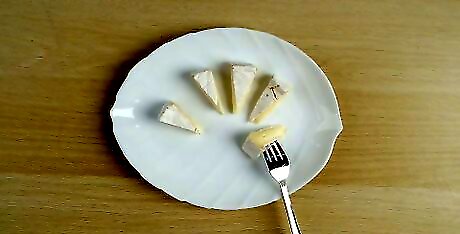
Serve the brie by cutting it into a wedge. If you bought a wedge, it is simple enough to serve by plopping it on a tray with a knife. A lot of brie is sold as a wheel, so cut out a wedge to get the party started. Slice from the rind to the center of the brie with a narrow cheese knife. Keep the slice relatively small, about 1 in (2.5 cm) or less depending on the serving size you desire. Cutting brie is a lot like cutting apple pie, but making the first cut into a beautiful wheel can be intimidating when you’re a guest. Cut a slice to give guests a sample to go by. When you’re cutting down a wedge of cheese, always cut along the sides from the center to the rind. Don’t cut off the pointed tip, the tastiest part of brie.
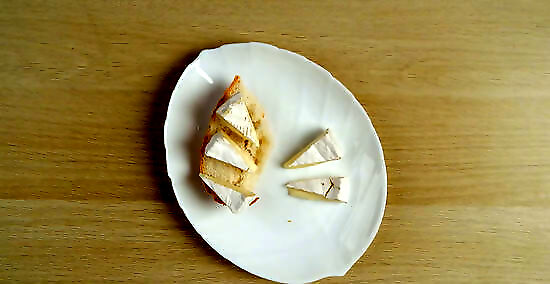
Place the cheese on plain bread or crackers to enjoy its basic taste. Rip off a piece of a baguette or another crusty bread and put the brie on top of it. The French traditionally eat brie this way since plain bread doesn’t compete with the delicious flavors of the cheese. Throw the cheese on top of the bread and pop it in your mouth. You don’t need to spread the cheese at all. Brie is soft and creamy as is, so put it on something of a similar size and enjoy it.
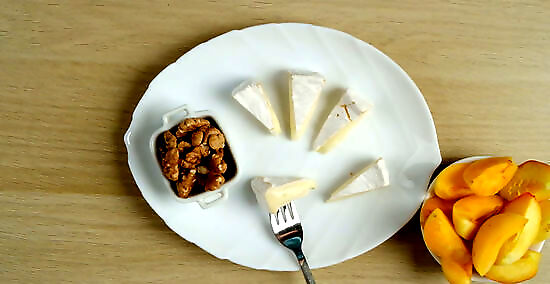
Pair the cheese with sweet fruit or nuts to complement its flavors. If you can resist shoving an entire slice into your mouth as soon as you cut it, combine it with other delicious things. The most traditional pairing is a slightly acidic fruit like apples, grapes, and pears. Both fresh and dried fruit goes well with brie. You could also try unsalted pecans, candied walnuts, and a little honey. Preserves are always great to spread on brie. Any type of preserve or jam works, but the best kinds are sweet and acidic, such as cherries, mixed berries, and figs. If you’re looking for more party options, arrange your own charcuterie board. Create a tasting tour out of meats like salami and prosciutto. Add a variety of cheeses, such as a nutty manchego and a crumbly blue cheese.
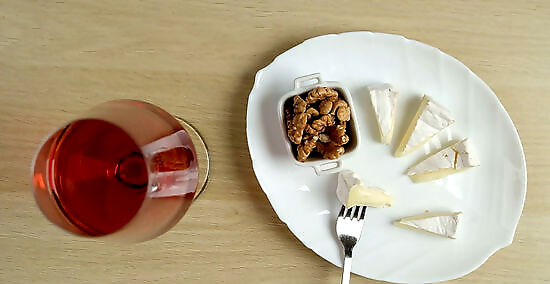
Select a fruity or acidic drink to pair with brie. You’re eating a French cheese, so you can’t go wrong with a nice French champagne. Sweet, tart wines like pinot noir go well with brie, but you could also grab a hearty beer. If you’re not drinking alcohol, consider pouring a fruit juice like grape or apple to complement the cheese’s soft flavor. Soft cheeses like brie tend to pair well with dry, fruity wines like riesling, marsannnay, or viognier. A lighter red wine like a pinot noir works well too on account of its delicate yet rich flavor that contrasts the mellow cheese. If you’re more of a white wine kind of person, look for something dry and acidic. The herby taste of a nice sauvignon blanc goes well with a slice of brie. For beers, strong but inoffensive brews like scotch ales, stouts, and porters are good choices. You could also go for something lighter and fruitier, such as a pilsner.
Cooking with Brie
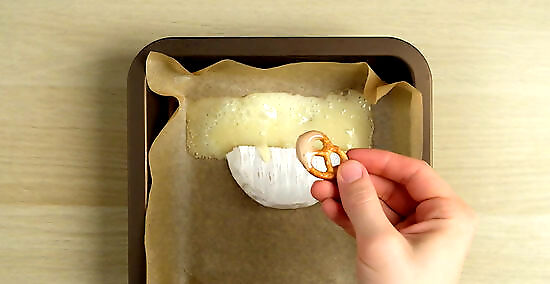
Bake brie to soften it and make it more spreadable. There are many ways to make a baked brie appetizer, but start off by putting a soft brie on a baking sheet lined with parchment paper preheated to 350 °F (177 °C). Wait for it to soften and bubble a little. If you leave it in for too long, it could liquefy into a mess, so check on it often. Add toppings before or after you heat the brie in the oven. Some toppings to try include fruit preserves, honey, fresh herbs, and crumbled nuts. You could make a dippable brie by cutting the top rind off the cheese. Leave the rest of the rind intact so the brie keeps its wheel shape. Then, dip crackers into the molten goodness or scoop it out with a spoon.
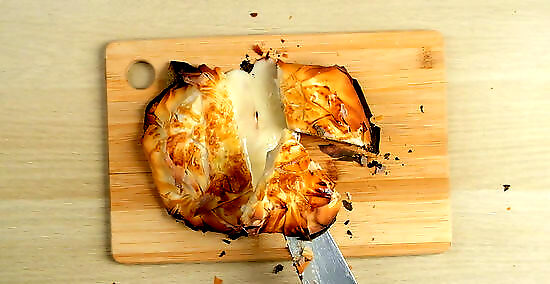
Make brie en croute to create a pastry appetizer. Brie en croute is a dish where you cover a small wheel of brie with puff phyllo pastry and bake it until it is golden brown. There are many variations of toppings you can add to the brie before closing it in the pastry. Cut the rind off the top of the brie first before adding them. When you’re ready to bake it, beat an egg and brush the egg on the pastry dough to fold it closed over the brie. For example, put some cranberry sauce on the brie for a holiday or cold-weather appetizer. Serve the brie by slicing it into wedges and eating as is or by putting it on crackers. You could add all sorts of toppings for an effortless but delicious brie appetizer. Try stirring ⅓ a cup (42 g) of chopped pecans in with 1 tablespoon (14.2 g) of melted butter, ¼ a cup (50 g) of brown sugar, and ¼ a teaspoon (0.6 g) of cinnamon.
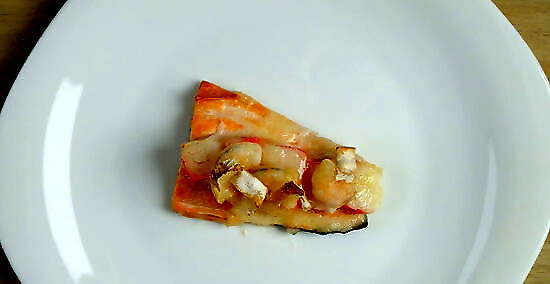
Stuff salmon with brie and crab for a seafood dinner. The soft, creamy taste of brie goes well with the stronger flavors of seafood. Cut 4 salmon fillets lengthwise to open up a pocket to stuff. Then, fill them with 6 oz (170 g) of both crab and shrimp along with 6 oz (170 g) of brie chopped up into ⁄2 in (1.3 cm) cubes. Bake the fish for about 10 minutes in an oven preheated to 400 °F (204 °C) to get a fish dinner with a gooey filling. Brie doesn’t have to be a sweet treat. Consider stuffing the fish with peppers, onions, pine nuts, and other savory ingredients. You could also make a beurre blanc sauce for additional flavor.
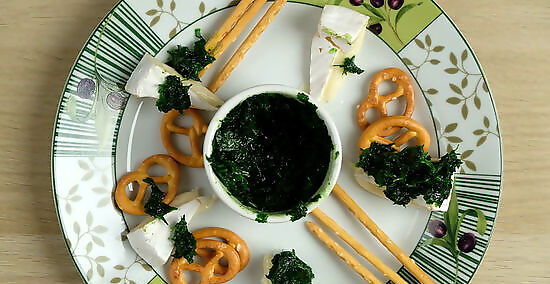
Use the brie as a flavorful spread for snacking. Pesto is one of the many ways to flavor brie to spread over bread and crackers. It’s great for casual gatherings or a delicious snack all for yourself. Cut a wheel of brie in half, then slather some store-bought pesto between it. Bring plenty of pretzels, crackers, and bread for dipping. You could make your own pesto, such as by blending together fresh basil leaves, cream cheese, pine nuts, and other ingredients. Mix the brie in as well if you want something closer to a dip than a solid wheel of cheese.
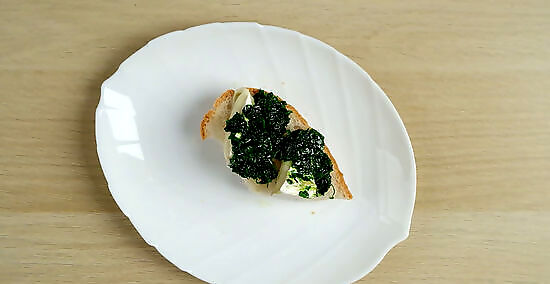
Put the brie on a sandwich for a simple way to use it. There is no simpler way to enjoy a good slice of brie besides eating it whole. Melt the brie over bread to enjoy a nice grilled cheese. You could also mix in some pesto or customize the flavor with other ingredients, such as bacon, avocado, and ham. Brie goes with all sorts of different ingredients. If you want to get adventurous with a sweet grilled cheese, try spreading the brie with cranberries or other preserves. You could even add turkey and stuffing for a wild autumn or holiday sandwich.
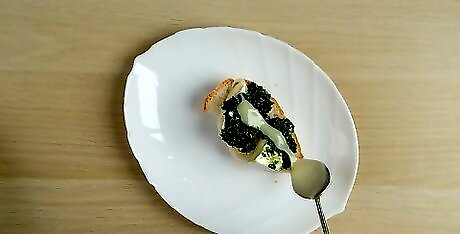
Use the brie in place of other cheeses to come up with your own recipe. Once you get accustomed to cooking with brie, there is no limit on what you can do with it. You could eat it plain, sprinkled on your salad. It goes well when melted on a burger or over french fries. Just be sure to save enough of it to use in your recipe!

















Comments
0 comment